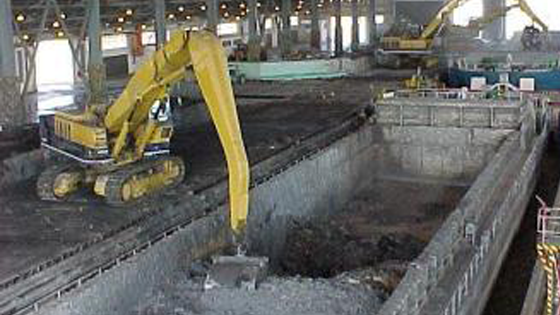Pulau Semakau: Biodiversity hotspot grows out of waste, Singapore

Even Singaporeans might not know that Pulau Semakau, a largely man-made island with mangrove swamps that host some of the country's most colourful marine species, doubles as a dumping ground for incinerated waste. The fact certainly impressed American journalist Eric Bland on a recent trip, as he lauded the island as a potentially useful conservation and waste management model for other cities. 'The only visible trash is a bit of driftwood on the rocky shore, marking high tide in an artificial bay. Water rushes out of the bay through a small opening, making waves in the Singapore Strait. The smell of rain is in the air. Hardly the way to start a feature on a landfill, but, as Mr. Bland writes, you'd never know all the rubbish generated by more than four million people is being dumped here. Pulau Semakau was created in 1998 when the government built a rock bund connecting two offshore islands, Semakau and Sekang. The bund enclosed 11 bays, or cells, into which the ash from incinerated waste is deposited each day. Water is pumped out of a cell before the waste, sealed in plastic to prevent leakage, is deposited. So far, four cells have been fully filled above sea-level, topped with dirt and planted with grass. Mangrove swamps surrounding the original islands were replanted, and have thrived. The island was opened to guided walks in July 2005, and logged over 6,000 visitors in 2006. Just as striking, though, are statistical tidbits that Mr. Bland drops - did you know Singapore generates 3 per cent of its electricity from burning rubbish, three times the power needed for all its street lighting, and that the rubbish burns at such high temperatures that it doesn't need any extra fuel?
Pulau Semakau, the artificial island created in 1999 to take in Singapore's trash, is setting an example for the future of conservation and urban planning. SINGAPORE'S only landfill is a 20-minute ferry ride south from the main island. On Pulau Semakau, coconut trees and banyan bushes line an asphalt road. Wide-bladed grass, short and soft, forms a threadbare carpet. The only visible trash is a bit of driftwood on the rocky shore, marking high tide in an artificial bay. Water rushes out of the bay through a small opening, making waves in the Singapore Strait. The smell of rain is in the air. You would never know that all the trash from Singapore's 4.4 million residents is being dumped here 24 hours a day, seven days a week - as it will be for the next 40 years. What distinguishes Semakau from Thilafushi - and almost any other landfill - is that its trash has been incinerated and sealed off from its surroundings. Singapore burns more than 90 per cent of its garbage, for reasons of space. Since its independence from Malaysia in 1965, Singapore has grown to become one of the world's 50 wealthiest nations. Not bad for a city state little more than one-quarter the size of the smallest US state, Rhode Island.
Source: http://www.wildsingapore.com/news/20070506/070511-2.htm

Image Source : https://www.nea.gov.sg/our-services/waste-management/waste-management-infrastructure/semakau-landfill

